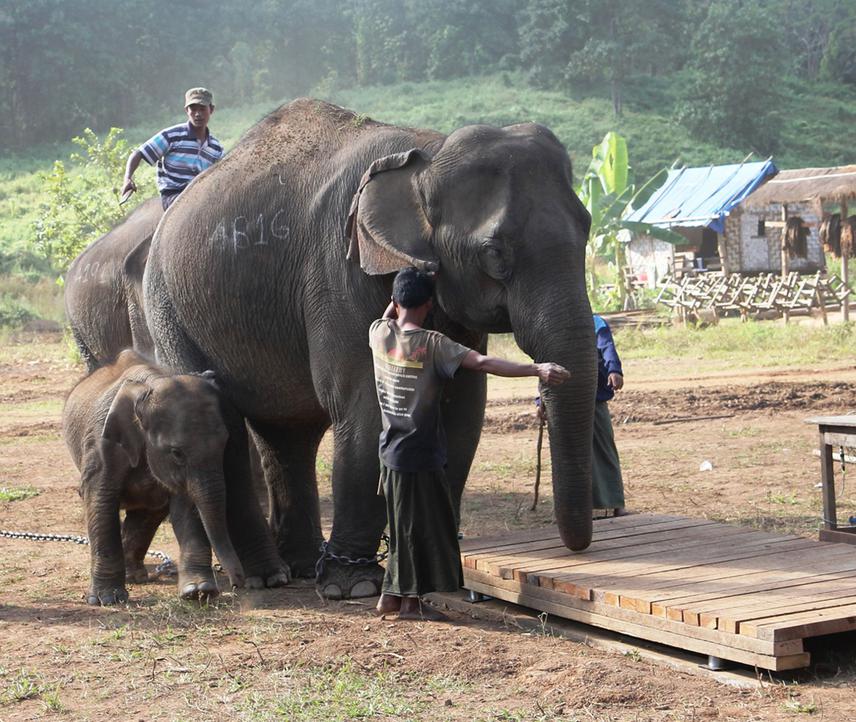Khyne U Mar
Other projects
To develop a centralized databank on timber elephants and to train Myanmar officials on studbook data management.

Myanmar is home to the world’s largest teak forests and captive Asian elephant population. Timber is traditionally extracted by ecologically-friendly and cost-effective elephant draft power. By law, each elephant employed at State-run Timber Enterprise possesses a unique registration number and a logbook where pedigree and life-history details are handwritten by officials at weekly health inspections. After taming/breaking procedure, each timber working elephant is given a name, registration number, mahout and a logbook. The first page of log books normally contain sex, age, name of elephant, date and place of birth/capture/taming and temperament (e.g. good/bad/unreliable). The following pages contain hand-written records/remarks on body condition/weight, reproductive status (e.g. barren/pregnant/musth/parturition/mating), work load, veterinary intervention, etc. Each entry is dated and stamped/signed by inspector. If the female has a calf, officials inspect both animals and above-mentioned information are entered in detail.
Through this information, ground staff in logging sites receive accurate information of each animal’s health and needs. A logbook can be referred both as a studbook and as a reference manual of the individual elephant. Furthermore, at the end of the financial year, the Myanma Timber Enterprise compiles the data on monthly extraction tonnage by region, list of elephants hired/ born/died/ captured/ sold/ transferred to produce type-set end-of-year reports. This report not only contains extensive information on the number of tree species cut by region but also man and elephant power involved in extraction, elephant capture scheme and financial investment.
As these texts are paper-based materials, they can decay rapidly at monsoonal climate of Myanmar with seasonally fluctuating temperature, humidity and pollution. Most old records/reports are kept in neglected warehouses which normally contain dust, light, biological pests and chemicals and are thus unsuitable for storing archival materials. . The records are unique worldwide and can be regarded as “heritage documents”. They have a significant dual role as an informational resource for forest administration, extraction history, elephant care and capture scheme while on the other hand having significant scientific value for exploring factors influencing the changes in population size of timber elephants and depletion of forest coverage by extraction/exploitation, changing climate and environment by decades. Similar data is not available for any other country worldwide.
We aim to retrieve as much reports as possible. With the Rufford Booster grant we will:
(1) digitalize of (paper-based, hand-written) elephant logbooks and typed extraction reports for future analysis and research
(2) train Myanmar officials in collecting, managing and analysing studbook data and in good housekeeping methodology of archival materials
(3) initiate for the development of a centralized databank. The proposed timeframe for this project is two year.